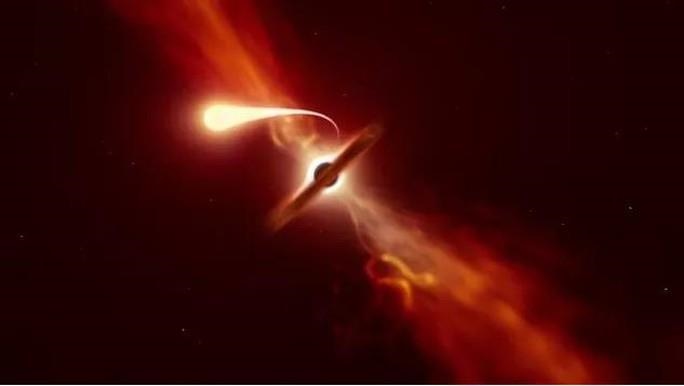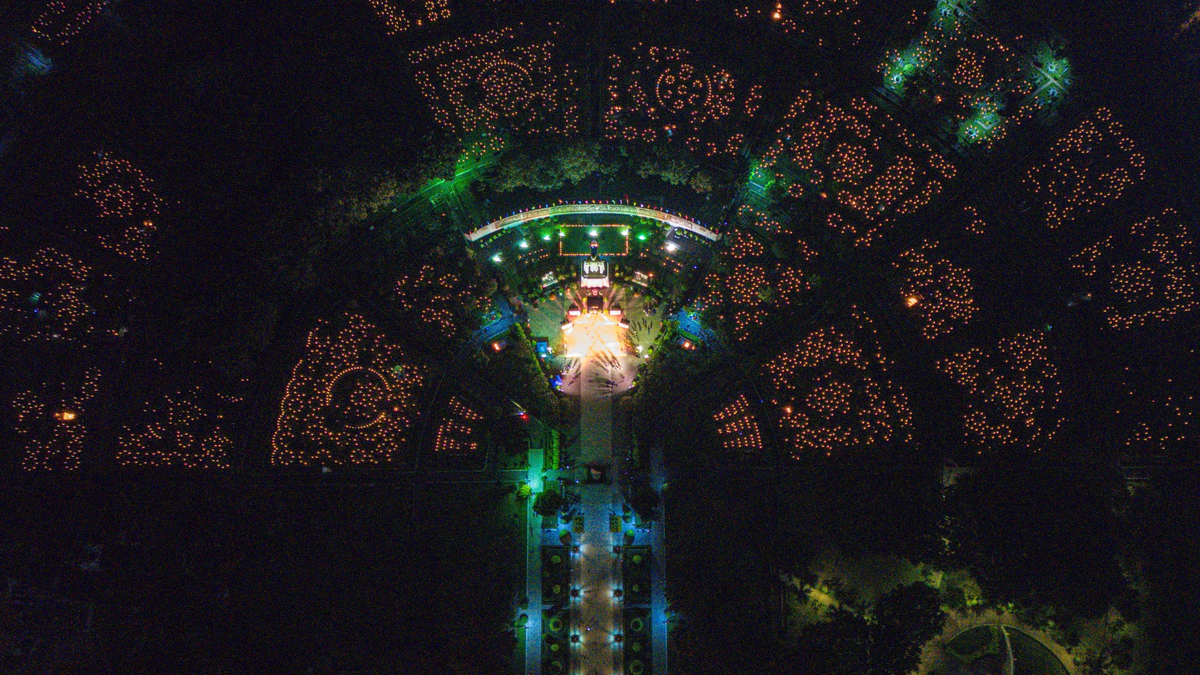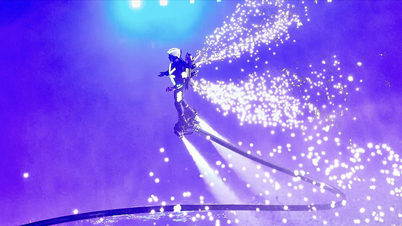According to Live Science, the object, named J221951, is one of the brightest things ever discovered by astronomers. It is located 10 billion light-years away from Earth, but because it is so bright, it was initially mistaken for a stellar explosion less than 1 billion light-years away.
In a new study, astronomers led by Dr Matt Nicholl from Queen's University Belfast (UK) attempted to determine the source of the bright light recorded by NASA's Hubble and Neil Gehrels Swift space telescopes.

An illustration depicting a "cosmic monster" from an ancient and distant world . (Photo: ESO)
The first surprise came when researchers tried to trace the path of gravitational waves from it, a very fast-moving ripple in space-time.
Their initial hypothesis was that an explosion was caused by the collision of two neutron stars. Neutron stars are the "zombies" of giant stars and can cause a "kilonova" explosion, much brighter than a normal supernova.
But it couldn't be a kilonova, because kilonovas typically appear blue, then turn red after just a few days. This monstrosity was blue for months, meaning it was much more powerful, hotter, and brighter.
Months later, data from two NASA telescopes revealed the key: It aligned with a distant, dim galaxy 10 billion light-years away.
This distance means that light from it also takes approximately 10 billion years to reach Earth, with slight errors due to the impact of objects along the way, creating the recorded image.
In other words, we are looking through space-time into a galaxy that existed when the universe was just over a quarter of its current age, witnessing a brilliant event 10 billion years ago.
The glowing "monster" was eventually identified as a giant black hole that had just erupted in a violent outburst, glowing like a quasar. Black holes often shine this bright when they've had a lucky break from a big meal.
Whatever caused it to glow, this once-in-a-lifetime moment allowed scientists to see it, because a dormant black hole is completely dark.
Such a "monster" black hole in the early universe would also be an unexpected object, breaking the long-standing theory that the dawn of the universe was very monotonous.
It adds to recent evidence that the universe grew incredibly rapidly in its first few billion years, where galaxies were born in droves, colliding and merging repeatedly.
It is these mergers that cause the supermassive black holes at the centers of those galaxies to merge and create giant "monsters", like the Milky Way's Sagittarius A*, which is the galaxy that contains Earth, a "giant" that has undergone at least 20 mergers.
(Source: Lao Dong Newspaper)
Useful
Emotion
Creative
Unique
Wrath
Source






































































































Comment (0)